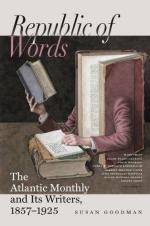The common Snow-Birds (Fringilla nivalis) are more interesting as individuals, but they are never seen in compact flocks. They go usually in scattered parties, and appear in Massachusetts about the middle of autumn, arriving from Canada and Labrador, where they spend the summer. They have many of the habits of the common Hair-Bird, (Fringilla socialis,) assembling around our houses and barns, and picking up crumbs of bread and other fragments of food. They differ entirely from the Buntings in their appearance, the latter being called White Snow-Birds, to distinguish them from the others, which are slate-colored. These birds are quite as remarkable, however, for their power of enduring the cold, and of sustaining the force of the tempest. In the midst of a snow-storm, they may often be seen sporting, as it were, in the very whirlpool of the driving snows, and alighting upon the tall sedges and weeds, and eagerly gathering the produce. The Hemp-Bird often joins their parties, and his cheerful and well-known twitter may be heard, as he hurriedly flits from one bush to another, hunting for the seeds of the golden-rods and asters.
The cause of the migration of these birds from their native northern latitudes is not, probably, the severe cold of those regions, but the deep snows that bury up their cereal stores at a very early period. But even if the grounds in those cold latitudes were only partially covered, these birds must scatter themselves over a wide extent of territory, in proportion as their food becomes less abundant. They live principally upon seeds, and hence their forages are made chiefly in the tilled lands, where the weeds afford them an abundance of food. The negligence of the tiller of the soil is, therefore, a great gain to the small birds, by leaving a supply of seeds in the annual grasses that grow thriftily with his crops.




